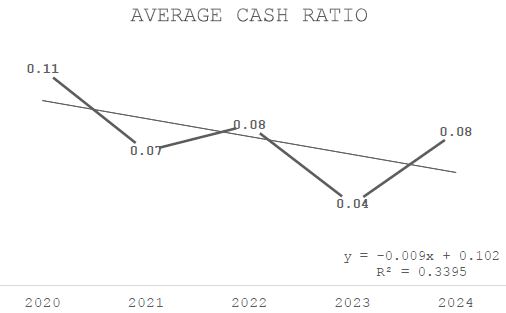Trends in Liquidity Position of Indian Automobile Companies: A Study of Companies Listed in NIFTY Auto
DOI:
https://doi.org/10.5281/zenodo.15828711Keywords:
automobile industry, economic growth, financial performance, liquidity, sustainabilityAbstract
Liquidity is defined as a company's ability to meet its short-term obligations. It is one of the important criteria for measuring the financial health of the company. Understanding the liquidity position is crucial for making informed investment decisions over the long term, as dividend decisions often depend on liquidity. Understanding and analysing liquidity position is a challenging task. Therefore, as a solution, the present study aims towards the Indian automobile industry and evaluates the liquidity position by using short-term liquidity ratios and working capital management ratios.
A study was performed in the companies listed in the NIFTY Auto index. An attempt has been made to rank the companies from the select list. Users can use this methodology to rank the companies in their portfolio. The study finds the top three and bottom three companies based on liquidity ranking and suggests some practices to enhance liquidity among the automobile companies.
Downloads
References
Anand, A., & Singh, R. (2018). Liquidity Management in Indian Automobile Companies. Journal of Financial studies, 25(4), 102-114.
Chaudhary, R., & R. (2018). The impact of macroeconomic factors on the development of the Indian automobile Industry. International Journal of Economics Studies, 36(3), 210-225.
Gupta, M., & Tiwari, P. (2018). Inventory management and cost control: A case study of Maruti Suzuki and Tata Motors. Journal of Business and Economics, 29(2), 150-170.
Patel, R., & Mehta, V. (2020). Financial Performance Indicators in the Indian Automobile Sector. Journal of Economic Studies, 45(3), 200-215.
Rao, T., & Reddy, V. (2019). The predictive power of liquidity ratios in fluctuating markets: A study of the Indian automobile sector. Financial Analyst Journal, 33(1), 97-109.
Singh, A., & Kumar, R. (2020). Technological advancements in the automobile industry. Automation, electric vehicles, and AI technology. Journal of Technology and Business, 12(5), 55-72.
Sinha, S., & Gupta, R. (2020). Profitability and Investment Capacity in the Indian Automobile Industry. Journal of Economics and Finance, 43(1), 103-115.

Published
How to Cite
Issue
Section
License
Copyright (c) 2025 Monalisha Samal, Dechen Jangmu Thongdok , Sneha Aich, Abhijeet Dutta, Suraj Sharma

This work is licensed under a Creative Commons Attribution 4.0 International License.
Research Articles in 'Management Journal for Advanced Research' are Open Access articles published under the Creative Commons CC BY License Creative Commons Attribution 4.0 International License http://creativecommons.org/licenses/by/4.0/. This license allows you to share – copy and redistribute the material in any medium or format. Adapt – remix, transform, and build upon the material for any purpose, even commercially.









